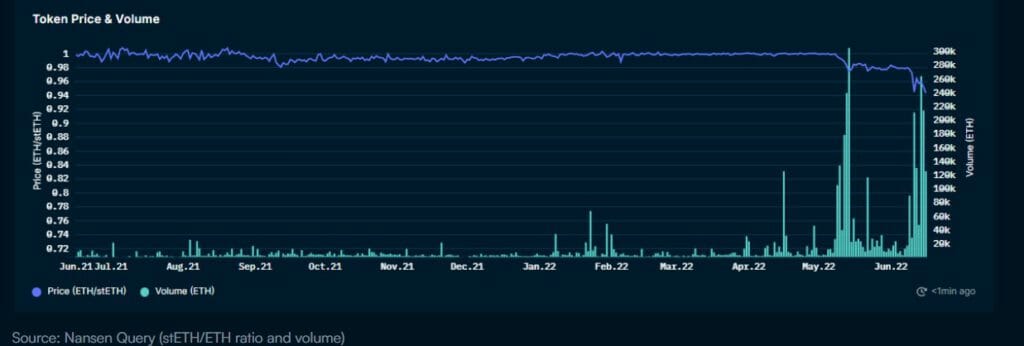Key Takeaways:
- “De-pegging” of stETH forced Celsius to sell its own holdings
- A rumor about a potential bailout following LUNA crash led to over $1 billion being withdrawn from Celsius within five days
- In Tether liquidation, Celsius incurred a loss of $97 Million
- Celsius Network has a roughly $1.2 billion hole in its balance sheet
- Celsius’s invested a $750 million line of credit in its own mining operations
Cryptocurrency lender Celsius filed for Chapter 11 bankruptcy on July 14, nearly a month after suspending withdrawals. Several factors contributed to Celsius Network’s fall, from macroeconomic factors to lack of proper risk management, among others.
According to the bankruptcy filing, the onset of the “crypto winter” coupled with the well-publicized collapse of Luna and the failure of several crypto exchanges led to growing industry-wide reluctance to do business with companies, such as Celsius that held crypto assets.
In December 2021, Celsius raised $600 million at an implied enterprise value of approximately $3 billion. The firm, which was in a financially stable position well into 2022 now only holds $4.3 billion in assets and $5.5 billion in liabilities, or a shortfall of $1.2 billion.
What exactly forced Celsius to suspend all operations? Which factor fuelled Celsius’ demise the most? The details in the bankruptcy filing have answers to all the questions.
Poorly calculated deals
From 2019 to 2021, Celsius borrowed money from a private lending platform, but when Celsius tried to repay the loan in 2021, the other party said it could not repay the collateral. As a result, the lender owes Celsius $361 million and 3,765 bitcoins. The filing did not reveal the platform’s name.
One major miscalculated deal that led to Celisu’s collapse was the Tether deal. During the market crash, Tether issued a margin call to Celsius with regard to an outstanding $841 million USDT loan. Celsius’s agreement to an orderly liquidation and settlement of its loan with Tether to preserve the remaining collateral in excess of the value of the loan resulted in a staggering $97 Million loss.
Celsius’s decision to invest a $750 million line of credit in its own mining operations without any proper backing can only be deemed as poor risk management. The investment in mining led to $576 million outstanding at the end of May, the filing shows. It currently has 80,850 mining rigs, with only 43,632 in operation. The majority of Celsius’ mining rigs were purchased in 2021, and the prices of these rigs are now dropping significantly by over 50%.
3AC Loan and LUNA Crash
Exposure to TerraUST and 3AC has been attributed as reasons for many of the renowned crypto lending platforms like Voyager’s sudden demise. Three Arrow Capital’s loan defaulting has put crypto firms on the brink of bankruptcy.
Despite popular misconception, LUNA’s crash did not affect Celsius as much as it did to other crypto firms. When Luna started to “de-peg,” Celsius immediately withdrew all deployed UST and suffered only a relatively minor loss of $15.8 million on all activity related to Luna or UST. Despite losing only a small amount in the crash, the market rumors about LUNA caused a run on Celsius as over $1 billion was withdrawn in 5 days in May.
As far as 3AC is concerned, Celsius provided two loans totaling $75 million to 3AC, and when 3AC failed to satisfy the additional guaranteed metals requirement, the lender liquidated the collateral owned by 3AC incurring a loss of $40.6 million.
Depegging of stETH
Even though Celsius did not have a concerning level of exposure to TerraUST, one of the crash’s after effects impacted the lender badly. Following the Luna collapse, stETH started to “depeg” from its 1:1 ratio with ETH. In mid-May, the stETH-ETH exchange ratio dropped slightly, creating a 2–3% in prices. The gap widened in June to 5-6%.
The “de-pegging” of stETH led to Celsius- one of the largest holders of stETH forced to sell its staked Ether. This further exacerbated the de-pegging, thus destroying the value of Celsius’ stETH holdings, triggering large withdrawals from their platform. Currently, the Company holds 410,421 stETH, and as a result, approximately $467 million of the Company’s ETH. To add to its woes, in 2021, a mistake by Eth2 staking service provider StakeHound resulted in the loss of over 38,000 ETH from Celsius.

As a part of its asset deployment business model, a number of Celsius’ assets were tied up in illiquid investments, including stETH and the CNL loan to Mining, that was intended to generate profit over time. The decline in crypto prices, coupled with an uptick of user withdrawals from Celsius’ platform, inflation, and the need to post additional collateral left Celsius struggling to process user withdrawals fuelling eventual bankruptcy.
Now that the firm has filed for Chapter 11 Bankruptcy, the crypto lender may sell one or more of its assets and/or consider an investment from third-party strategic or financial investors in exchange for equity in a “reorganized” Celsius to pay back its creditors.










